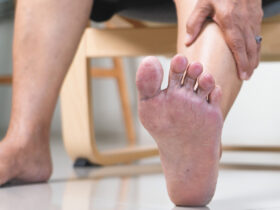 It is hard to spend time watching television or reading a magazine lately, without seeing or hearing about a condition called Peyronie’s disease (PD). The strange name actually comes from the surname of the first surgeon of an old French king. Descriptions ranging from “crooked stick” to “bent carrot” are certainly effective in raising interest in this very sensitive and still poorly understood condition.
It is hard to spend time watching television or reading a magazine lately, without seeing or hearing about a condition called Peyronie’s disease (PD). The strange name actually comes from the surname of the first surgeon of an old French king. Descriptions ranging from “crooked stick” to “bent carrot” are certainly effective in raising interest in this very sensitive and still poorly understood condition.
The development of PD is related to the way a mans penis responds to tissue injury, where trauma to the penis can cause scar-like (plaque) tissue to develop. This can happen in a dramatic way, when in a single event, the penis is forcibly bent or even ruptured. This can result in the sudden onset of pain and swelling. More commonly, less intense episodes of discomfort and microscopic injury occur over time, and ultimately result in the same type of scarring, or plaque formation. These plaques form in the erectile tissues of the penis, and are very different than plaques which form in arteries or blood vessels, like occur with heart disease. In fact, they commonly occur in young, sexually active men.
These penile plaques can initially be painful, but normally the pain subsides over time. They can also cause the penis to change shape. This can be noticed as a curve, like a “bent carrot”, or sometimes an indentation, like an “hourglass”. Because of these changes, shortening of the penis is a common complaint. In some cases, these changes can make it difficult, or even impossible for a man to have successful intercourse.
It is imperative that any patient who experiences these changes sees or talks to a urologist who specializes in treating this unique condition. Not all urologists are trained in the procedures and techniques associated with treating this condition. In general, the sooner a patient gets treated, the better the outcome in the long run.
PD occurs in two distinct phases.
1) Acute (active) phase – This is when most of the changes in the penis occur, within the first 12 months after onset. It is when pain typically occurs. Pain with erections can sometimes be intense, and is caused by inflammation in the area of the developing plaques.
2) Chronic (Stable) phase – After 12-18 months of the onset of symptoms, the scarring and curvature, if present, will stabilize, and not become noticeably worse. Unfortunately, most of the time, they will not get better either. In a small percentage of cases, around 15%, the condition does spontaneously resolve. This is the period of time when erections may become more difficult to obtain.
How is Peyronie’s Disease Diagnosed?
Most of the time, the condition is diagnosed by patient history and physical examination. Often, ultrasound testing is performed to evaluate the penile tissues further to evaluate the scarring and presence of plaque tissue. It can be associated with other connective tissue disorders, like Dupuytren’s contractures.
How is Peyronie’s Disease (PD) Treated?
Men with very small plaque, or no plaque, no curvature, no pain, and no problems obtaining erections may not require any treatment at all. If the condition involves any of the above, there are treatment options.
Oral Medications
Despite being prescribed for years, there has never been any proven benefit to using any oral medications for PD. In the past these have included Vitamin-E, Potaba, anti-oxidants, L-carnitine, pentoxifylline, and Co-Q-10.
Penile Traction Therapy
The use of penile straightening devices has evolved over the past few years, and numerous studies have shown that the regular use of these straighteners on a daily basis can be very effective and when used correctly, can improve curvature, pain, and erectile quality. They offer an inexpensive, non-invasive method for treatment.
Penile Injections
Injecting a medication directly into the plaque tissue of PD offers a way of breaking down the scar tissue, and ultimately results in softening of the plaque and straightening of the penis. The currently available medication known as Xiaflex, or collagenase is the most commonly used agent.
Surgery
Depending on the degree of curvature, the presence of indentations, and the presence of erectile dysfunction, there are a number of different surgical options available. Doctors will usually wait until symptoms are stable and there has been no worsening of curvature for at least 12 months.
Importantly, patients should know that PD is a common condition that affects many men, and many couples, and that it can be diagnosed and treated very effectively in most cases, with or without surgery.
Alejandro Miranda-Sousa, MD
Dr. Miranda-Sousa is a board certified urologist. He is an author and co-author of multiple research and clinical peer-reviewed medical articles. He received Best Abstract from the American Urological Association in 2007 and is Fellowship Trained in Urodynamics and Neurourology.
Our providers are highly-qualified, skilled experts in the area of urinary and bladder disorders, pelvic floor prolapse, prostate cancer, along with many other related disorders Dr. Miranda-Sousa and his staff are ready to answer any of your urological questions and concerns, as they treat all of their patients with the utmost of care.
For more information, please visit our website www.UrologyExperts.com or call Urology Experts today at (239) 226-2727 or email info@UrologyExperts.com to schedule your consultation!
FORT MYERS
12995 S. Cleveland Ave., Suite 184
Fort Myers FL 33907
Cape Coral
1206 Country Club Blvd
Cape Coral, FL 33990









